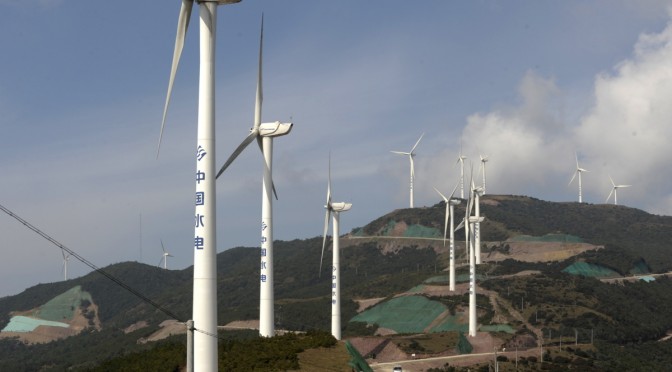Despite the notable installations off the coast of the UK reported recently, such as Hornsea One, China overtook all European countries in the installation of offshore wind farms in 2018.
In notable recent developments, for example, LM Wind Power’s first two sets of LM 66.6 blades have been successfully installed on Shanghai Electric Wind Power’s 4.0MW-136 wind turbine in China.
The installation of the 66.6-metre offshore blades in September 2018 followed the signing of LM Wind Power’s two-year agreement with Shanghai Electric Wind Power.
Also during 2018, GE Renewable Energy has installed its first Haliade 6MW turbines at a demonstration project off east China. The Fujian Xinghua Gulf multiphase demonstration project will eventually have a total capacity of 79.4MW, using turbines from several manufacturers.
In September last year meanwhile, the UK’s ORE (Offshore Renewable Energy) Catapult signed a deal with Chinese clean energy company TusEnergy to establish a £2 million research centre in Shandong province to help develop innovative technologies for the industry. It will assist UK companies looking to enter the Chinese market and support the development of a 300MW offshore wind farm, the partners stated.
Global investments
The latest data released by the Brussels-based Global Wind Energy Council shows that the wind energy industry installed 51.3 GW of new capacity in 2018. Since 2014, the global wind market’s growth has been stable, installing above 50 GW of new capacity each year.
GWEC forecasts that new installations will reach 55 GW or more each year until 2023. © GWEC
Despite a 3.9% decrease in the global onshore market in annual terms, there was promise shown by growth in developing regions such as Latin America, South-East Asia and Africa which were responsible for 10% of new onshore installations in 2018 (4.8 GW).
New installations of 4.49 GW in 2018 led the global offshore market to grow by 0.5%, reaching a total installed capacity of 23 GW. For the first time, China installed more offshore capacity than any other market (1.8 GW), followed by the United Kingdom (1.3 GW) and Germany (0.9 GW).
GWEC forecasts that offshore wind will become an increasingly global market. If governments remain committed, and projects and investments continue, annual installations in Asia could reach 5 GW or more each year. In the US, GWEC expects the developing offshore wind market to reach 1 GW by 2022 – 2023.
Growth in Asia
GWEC forecasts that new installations will reach 55 GW or more each year until 2023. Stable volume will come from mature regions in Europe and the US, whilst significant growth is forecast to be driven by developing markets in South East Asia and the global offshore market.
GWEC expects huge growth in Asia through the coming decade. © GWEC
Total installed wind capacity reached 591 GW at the end of 2018, a growth of 9.6% compared to the end of 2017. Total installed onshore wind grew by 9%, whilst total offshore wind grew by 20%, reaching 23 GW.
“2018 was a positive year for wind in all major markets, with China leading both onshore and offshore growth,” said Ben Backwell, CEO of GWEC. “We expect huge growth in Asia through the coming decade and beyond as part of the continuing shift from Europe to Asia as the driving region for wind development. However, government support and policy are the key to enabling faster market growth in key regions such as South East Asia.”
Adrian Wilson
insidecomposites.com




